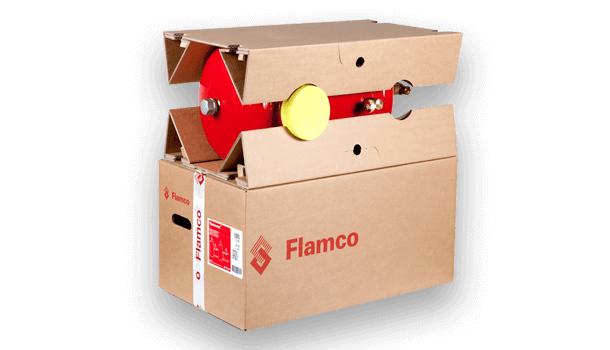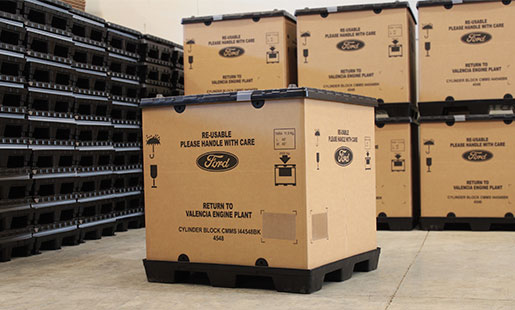Industrial Metal Packaging: Strength and Toughness in Every Style
Industrial Metal Packaging: Strength and Toughness in Every Style
Blog Article
Reliable Industrial Recycling Solutions for Lasting Product Packaging: A Comprehensive Overview
In today's increasingly environmentally-conscious world, the demand for sustainable packaging options has actually never ever been greater. To satisfy this need, companies across markets are proactively seeking efficient commercial recycling services. Nevertheless, navigating the complex landscape of sustainable packaging can be testing without an extensive guide. That's where this thorough overview on efficient industrial recycling solutions for sustainable product packaging is available in. By exploring vital locations such as packaging material choice, developing for recyclability, carrying out recycling infrastructure, working together with reusing partners, and tracking and gauging reusing success, this overview will certainly equip you with the knowledge and tools essential to make educated choices and drive positive change within your company. Whether you're a product packaging specialist, sustainability supervisor, or just interested in the topic, this overview will certainly give beneficial understandings and techniques to help you navigate the world of lasting product packaging.
Product Packaging Material Option
The choice of product packaging materials plays a vital role in making certain the sustainability of commercial reusing solutions. The selection of materials is crucial in minimizing ecological impact and maximizing recycling effectiveness when it comes to sustainable product packaging. Picking the appropriate products can help in reducing waste generation, preserve resources, and promote a circular economic situation.
Products like cardboard, paper, glass, and certain types of plastics can be reused multiple times without shedding their quality. On the various other hand, materials that are difficult to reuse, such as blended plastics or non-recyclable composites, can produce difficulties for the recycling process and might end up in land fills or incinerators.
One more consideration is the usage of renewable and naturally degradable materials. Product packaging made from eco-friendly resources, such as plant-based plastics or biopolymers, can help in reducing reliance on nonrenewable fuel sources and reduce environment change. Additionally, biodegradable materials damage down normally in time, lowering the buildup of waste in garbage dumps.
Furthermore, the weight and volume of product packaging products must be reduced to minimize transport prices and energy intake. Lightweight materials not just call for less sources throughout production but likewise add to decrease carbon emissions throughout transport.
Designing for Recyclability
Product packaging developers ought to prioritize the usage of products that are commonly accepted for recycling and have developed reusing facilities. Materials such as glass, light weight aluminum, and particular kinds of plastic, like Animal and HDPE, are typically recycled and need to be preferred over products that are pricey or tough to reuse.
One more important consideration in designing for recyclability is the removal of unneeded parts or products. By decreasing the number of layers, coverings, and extra components, product packaging can be made easier and easier to reuse. In addition, developers need to aim to reduce making use of mixed materials, as they can make complex the reusing procedure.

Implementing Recycling Framework
Effective implementation of reusing facilities is crucial for the success of commercial reusing options. Without appropriate framework in place, the reusing procedure ends up being ineffective and inefficient, impeding the total objective of sustainable product packaging.
To implement recycling framework effectively, a number go to these guys of key elements require to be considered. First of all, there must be a well-organized collection system that assists in the splitting up and collection of recyclable materials. This can consist of marked recycling containers in public rooms, as well as collaborations with waste management firms for curbside pickup and sorting.
As soon as gathered, the recyclable materials require to be moved to recycling facilities in a timely way. This needs efficient logistics and transport networks, making certain that the products get to the ideal centers without hold-up.
At the reusing centers, progressed sorting and handling technologies need to be in location to separate different kinds of materials properly. This consists of using automated sorting machines, optical scanners, and hand-operated sorting strategies.
Moreover, there must be a durable market need for recycled products. This can be achieved via cooperations with makers and markets that use recycled products in their production processes. Creating a secure market for recycled products incentivizes the recycling sector and advertises the round economic climate.
Collaborating With Recycling Allies

One key aspect of collaborating with reusing companions is the establishment of clear communication networks. It is necessary to develop open lines of communication to help with the exchange of info, updates, and comments. This allows both events to remain informed concerning the development of reusing campaigns and attend to any obstacles or problems that might arise.
Additionally, cooperation can involve joint initiatives in developing and implementing recycling programs. Recycling partners can offer useful insights and support in developing reliable collection systems and identifying the most ideal recycling innovations. By collaborating, services and reusing companions can enhance the reusing procedure and lessen waste.
Furthermore, cooperation can prolong past the operational elements of reusing. It can likewise encompass advocacy and education and learning campaigns. By joining pressures, services and reusing companions can raise understanding concerning the value of recycling and advertise the adoption of sustainable packaging techniques amongst customers and other stakeholders.
Tracking and Measuring Recycling Success
To make sure the performance of commercial recycling options and the success of lasting product packaging objectives, it is important for businesses and their reusing partners to establish a comprehensive system for monitoring and measuring recycling success (bulk container recycling). Determining and tracking recycling success permits businesses to assess the impact of their recycling efforts, determine areas for improvement, and set meaningful targets for future progress
One way to track recycling success is via making use of data collection and analysis tools. By accumulating information on the amount of packaging waste generated, the percent of waste that is reused, and the kinds of products being reused, companies can acquire important insights right into their recycling performance. This information can after that be examined to determine fads, patterns, and areas of ineffectiveness.
Another important facet of monitoring and determining recycling success is establishing clear and standard metrics. This allows organizations to contrast their performance against sector criteria and track their progress with time. Metrics such as reusing rates, waste diversion prices, and greenhouse gas More Help discharges can provide a measurable step of a service's recycling success.

Verdict
To conclude, applying efficient commercial recycling remedies for sustainable product packaging calls for cautious factor to consider of product packaging material option, making for recyclability, carrying out recycling framework, working together with reusing partners, and tracking and gauging recycling success. By integrating these practices, organizations can add to an extra environmentally-friendly and lasting approach to product packaging, decreasing waste and advertising the circular economic situation.
By checking out vital areas such as product packaging product choice, making for recyclability, executing reusing infrastructure, working together with reusing companions, and tracking and gauging reusing success, this guide will furnish you with the knowledge and tools essential to make informed decisions and drive favorable modification within your organization. Product packaging developers ought to prioritize the usage of materials that are extensively accepted for this contact form reusing and have established reusing frameworks.Collaboration with recycling companions is necessary for the successful application of industrial recycling services and the success of sustainable packaging goals. By joining forces, organizations and recycling partners can increase understanding concerning the importance of reusing and promote the adoption of sustainable packaging practices among customers and other stakeholders.
By collecting data on the amount of packaging waste generated, the percent of waste that is recycled, and the types of materials being recycled, companies can acquire beneficial understandings right into their reusing efficiency.
Report this page